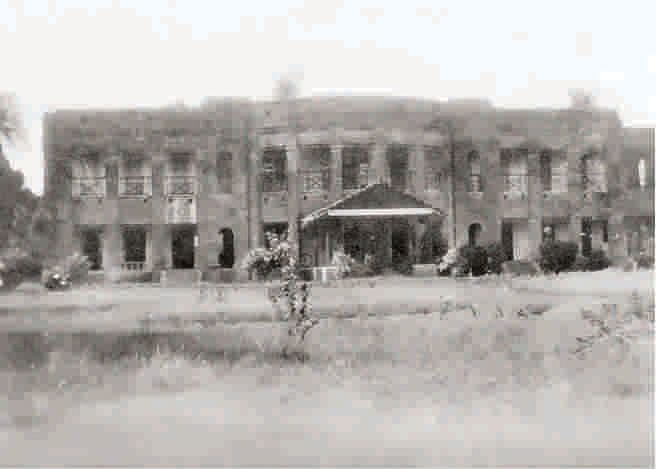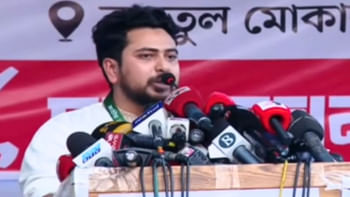Sir Harold Stevens ICS of Bengal

My friend Ian Stein lives and writes from the small, picturesque, cathedral town of Dunblane, Scotland. He is aware of my keen academic interest and search for biographical information and vintage photographs of Britons who had once served in the British Raj in India as members of the prestigious Indian Civil Service (ICS), of the Bengal cadre. Of special interest to me are those British ICS officers who had spent a substantial part of their service career in the then East Bengal during the Raj and later even in East Pakistan having opted to serve in Pakistan after the partition of the subcontinent. A typical case in point would be Stephen Benedict Hatch-Barnwell, ICS. The University Press limited (UPL), Dhaka, published his memoirs, “The Last Guardian-Memoirs of Hatch-Barnwell- ICS of Bengal” in 2011. It was the first book by a British ICS officer of the Bengal cadre, ever to be published from Bangladesh. Although I had initiated its publication by bringing the unedited manuscript from London from Stephen's son Philip, a friend of mine, chosen UPL as the publisher and coordinated the publication, it was actually the untiring efforts of Mr. Khalid Shams, a distinguished former civil servant, who not only meticulously proof-read and edited the manuscript, but had painstakingly put it all together into a book form prior to its publication. Take it from me, If not for his selfless dedication the book would not have made it to the press. Back to Ian Stein again.
Ian belongs to a family of an “old India hand”. His maternal grandfather, Sir Harold Samuel Eaton Stevens, KCIE, CSI, CIE, MC, had served in British India as an ICS officer, Bengal cadre. Sir Harold was born in Bareilly, now in Uttar Pradesh, India, on 29 November, 1892, and baptized there on 6 March, 1893. He was the son of Harry George Raikes Stevens and Amy Sarah (nee Eaton). Harry was a Regimental Schoolmaster in the Ist Hampshire Regiment and had also served in Mauritius and Nova Scotia, Canada.

Sir Harold was sent to George Heriot's School, Edinburgh, Scotland, in 1906. In 1910 he held the rank of a lieutenant in the school's Officer Cadet Corps. He left school in 1910, and joined the Edinburgh University to study Arts and Science. But he did not complete his degree. For he volunteered in the British Army at the outbreak of the First World War in 1914 and was awarded his commission in August, 1914, as a 2nd Lieutenant in the 12th Battalion, The Royal Scots. He served in the The Royal Scots throughout the Great War, rising to the rank of major. He won a Military Cross (MC) in 1916 for 'conspicuous gallantry ', and the French decorations of: 'Croix-de-Guerre with Palme' in 1918 for 'showing great valour, courage and initiative', and was also appointed to the 'Chevalier Legion D'Honneur in 1918 for 'good work on the field of battle.' He was wounded twice, once in the battle of Loos in 1915 and again prior to the battle of Somme in 1916, both in France. He resigned his army commission in 1920 and joined the Bengal cadre of the Indian Civil Service (ICS). Interestingly, he started his career in the then East Bengal (now Bangladesh) as an Assistant Magistrate and Collector in Chittagong in 1920.
Sir Harold had a chequered service career in British India. A brief summary of his service postings are as follows: 1920-Assistant Magistrate and Collector, Chittagong; 1922-Kuseong (Darjeeling district); 1923- Serampore in Hooghly; 1925-Joint Magistrate and Deputy Collector, Dhaka; 1926- District Magistrate and Collector, 24 Parganas; 1927 to 1931 posted in various places in Bengal: Midnapore, Birbhum, Howrah, Calcutta and Bakerganj (Barisal); 1933-Commissioner Chittagong Division; 1933 to 1934- Midnapore and 1935 to 1947- Calcutta. His last posting in Calcutta before the partition of 1947 was that of the Chief Secretary, Government of Bengal and Advisor to the last British Governor of Bengal, Sir Frederick John Burrows (1887-1973) GCSI, GCIE. Sir Frederick was Governor of Bengal from 19 February, 1946 until 14 August, 1947.

During his ICS career, Sir Harold was both a witness and participant in momentous historical events in Bengal, India. His tour of duty in Chittagong in 1920-21 took place under politically charged atmosphere of the Ghandhi led non-cooperation (boycott) and Khilafat movements against the Raj. The movement began to lose steam, when he moved to Kuseong in 1922. While posted as Commissioner of Chittagong Division in 1933, a very important and sensitive posting then, Sir Harold had to deal with the aftermath of the famous Chittagong Armoury Raid led by the valiant Masterda Surya Sen. It was a very difficult period requiring a high degree of professionalism. During the whole period of the Second World War (1939-45), when the entire British Indian government machinery, both civil and military, went on a war footing, especially with the imminent threat of a Japanese invasion through Eastern India, Sir Harold was posted in Calcutta then the capital of undivided Bengal, holding important government portfolios including that of the Home Department as its Head, a powerful and sensitive post from 1945-47, the last European to do so. As the Food & Civil Supplies Commissioner in 1943, he was engaged in tackling the Great Bengal Famine for which he was later felicitated for his untiring dedication to alleviate the misery of those affected. Subsequently, towards the end of his Indian career he was also a witness to the horrendous bloodletting on 16 August, 1946, remembered in history as the Great Calcutta Killings that inexorably set in motion a process which culminated in the fateful partition of India on communal lines in 1947.
Sir Harold married Mona McGregor of Edinburgh. They had two children both daughters, Betty and Pamela, born in Bengal. Betty, mother of Ian, was born in Chittagong on 10 March, 1922, and was baptized there on 9 May, 1922. Betty celebrated her 92nd birthday this year. She lives in Argyll, Scotland. The youngest daughter, Pamela, only lived for three years and is buried at the Christian cemetery In Kuseong. Mona, Sir Harold's first wife died when Betty (Ian's mother) was nine years old. She was buried at the Scottish Cemetery in Calcutta. Betty was thus sent at a tender age for proper care and schooling to England to live with Harold's parents. She never returned to India again. In 1935, Sir Harold remarried. His second wife was named Iris Hansen.
Ian's mother Betty still treasures a couple of silver items as mementoes bequeathed to her by her mother Mona, whose mother also the wife of a British ICS officer was given them for opening events in India. These silver items have inscriptions which Ian has not, as yet, deciphered.

Ian is also in possession of two interesting letters written to his grandfather, Sir Harold, in appreciation for his exemplary services rendered during the tragic Bengal Famine of 1943. As a consequence of the terrible famine the Government of Bengal on 15 September, 1943, created a special post of Food & Civil Supplies Commissioner, and Sir Harold was appointed to that role. Later he was also a witness at the Famine Enquiry. Ian quotes from extracts of these original letters written to his grandfather (Sir Harold), one of which was by Sir Khwaja Nazimuddin who had just resigned as the Chief Minister of Bengal. Nazimuddin wrote this personal letter on 31 March 1945 thanking Sir Harold, “for all you have done for the people of Bengal”. The other hand written letter was from Sir Azizul Huq, Member of Council, Commerce and Civil Supplies, written from 'Peterhoff', Simla on 10 June, 1944. In it Huq congratulates Sir Harold Stevens on his receiving the distinguished CSI, and addresses him thus, ”My dear Stevens” and includes the following sentence, “ your devoted, hard-often almost thankless-services to the cause of saving and rehabilitating Bengal will be realised by all those who have had occasion to be in touch with the problem.”
Sir Harold Stevens took retirement on the partition of India in 1947, and like most of his ilk, went back home to Britain. Ian laments that he is unfortunately not privy to more information on his grandfather, Sir Harold, whereby, a more comprehensive biography of his including some unknown facts of that turbulent period in British India could have come to light.
Sir Harold Stevens died at Bexhill-on-Sea, Sussex, England, on 23 July 1969.
I gratefully acknowledge the help and cooperation of my friend, Ian Stein, for making this article possible.
The writer is the Founder of Bangladesh Forum for Heritage Studies

 For all latest news, follow The Daily Star's Google News channel.
For all latest news, follow The Daily Star's Google News channel. 



Comments